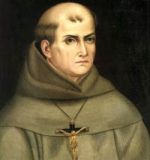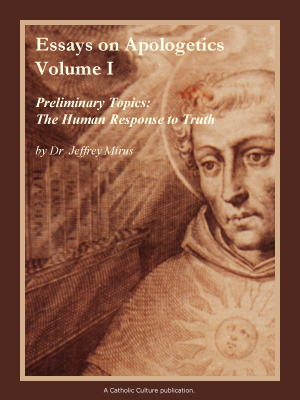The MOST Theological Collection: Free From All Error: Authorship, Inerrancy, Historicity of Scripture, Church Teaching, and Modern Scripture Scholars
"Chapter 3: Multiple Authors "
A problem arises from the special kinds of ideas people of the ancient Near East had about literary authorship. We today are very conscious of the rights of the author to his own work. No one would dare to change it and publish it under that author's name. Not so in the ancient Near East. Someone later might make modifications, and still later, more and more modifications might be made-all leaving the name of the original author in place. Hence the question: Can this fit with the doctrine of inspiration? And if so, how?
It is often charged that the Pontifical Biblical Commission' in its early decrees, was excessively restrictive and narrow. Not in this instance! The Commission was asked about this sort of point. The question was whether in the first five books of the Old Testament we absolutely must hold that Moses either wrote each and every thing with his own hand or dictated them to scribes. The Commision's answer, given on June 27, 1906, was no.
The Commission also examined the theory that says "that the work, conceived by [Moses] under divine inspiration, was entrusted to another or to several to be written ... and that finally the work done in this way and approved by the same Moses as the leader and inspired author was published." The Commission found this theory was permissible.
So it is not necessary to hold that Moses himself wrote all of the first five books. He could have commissioned others to do the work, checking and approving it after they had finished. After all, the Pope today sometimes works in this way, assigning some writer to prepare a document for him according to his own instructions. Later the Pope will publish it as his own. He might not even find any need for revisions.
The Commission also raised this question: "Can it be admitted ... that in so long a course of ages, some modification happened to [the Pentateuch], such as additions after the death of Moses by an inspired author or glosses and explanations injected into the text, or that certain words and forms were changed from an ancient form of the language into more recent language; and that defective readings can be attributed to the hands of scribes, about which we may investigate and judge according to the norms of criticism?" The reply was: "Yes, subject to the judgment of the Church."
There is all the latitude one might desire. In dealing with the specific case of the Pentateuch, the first five books of the Old Testament, it is legitimate to think that Moses had others do part of the work, subject to his approval. We may also say that long after his death some other inspired author changed things that Moses had written or approved. The final touches would, obviously, have to have been done by an inspired author.
The Pontifical Biblical Commission also admits that some later person, not necessarily inspired, might have updated the forms of the language. For every language, while it is living and spoken, changes. After some time persons who use that language may no longer understand easily some older expressions. That could have happened to the Pentateuch, and someone might later have put the same ideas into more current language.
Behind all of these questions, lies the belief that Moses is in some way the author of the Pentateuch. That view can still be honestly maintained today. A highly respected recent Scripture scholar, Eugene Maly, writing in Jerome Biblical Commentary, said: "Moses ... is at the heart of the Pentateuch and can, in accord with the common acceptance of the ancient period, correctly be called its author" (1, p.5, par.24). In speaking of the "common acceptance of the ancient period," Father Maly has in mind precisely that, later on, persons often felt free to modify earlier writings while leaving the name of the original author on them.
So, in the case of many hands or authors, there could be several inspired authors; that is, each one who worked on a book could be inspired. But it is obviously also possible that in some cases only the final writer was inspired. In that case, one needs to approach the problem by way of literary genres to determine what to say about authors other than the final author. That approach will be explained in chapter 9.
But what about the sources that Moses might have used? The Pontifical Biblical Commission raised this question: "Can it be admitted, without prejudice to the Mosaic authorship of the Pentateuch, that Moses, in producing his work, used sources, that is, written documents or oral traditions, out of which, according to the special purpose he had in mind and under divine inspiration, he took some things and inserted them in his work word for word, or else substantially, while either enlarging or shortening them?" The answer was yes.
Behind this question lies the documentary theory of the Pentateuch. Really, the theory applies largely to the first four books: Genesis, Exodus, Leviticus, and Numbers. Deuteronomy is, to simplify a bit, still another source. For the first four books, it is usual to speak of three sources: J, for Yahwist; E, for Elohist; and P, for Priestly Code. It is customary to use the letter J to reflect the German spelling of Yahweh. Later hands, according to many scholars, modified the earlier work of Moses, utilizing these sources, some of which of course could stem from Moses himself or from different writers employed by him. J, the Yahwist, is so-called because of his fondness for using the word Yahweh for God, while the Elohist prefers Elohim. It is thought by many that the Yahwist furnished the outline and much of the content of those first four books. The Yahwist stresses events after the Patriarchs (Abraham, Isaac, and Jacob) as the fulfillment of the promises God had made to these men. In a sense then, this could be called redemptive history.
The Elohist document is hard to separate from that of J, for both are early and primitive. E may have been a narrative from the Patriarchs to the generation that wandered in the Sinai Peninsula after receiving the Ten Commandments, while J is apt to use human terms-anthropomorphisms. For example, J speaks of God as angry and regretting that He had made man, or as coming down to see the tower of Babel. The Elohist is much less inclined to the use of anthropomorphisms. The third document, P, the Priestly Code, is noted for its concern for cultic things and religious laws. Thus the Book of Leviticus is entirely P.
Most scholars once agreed on the existence of these sources. Today that consensus has been seriously damaged, though very many do continue to hold the theory. Distinguished among those who do is Pope John Paul II, who in several of his many conferences on Genesis, speaks in a matter-of-fact way about these sources.1 In speaking as he does, the Pope was obviously not intending to impose this theory authoritatively on the whole Church. First, because it was only something he said in passing; second, because a question of authorship of books of Scripture is not a matter of revelation but of history. This is true even when the text of Scripture seems to identify an author. In that case, it should be recalled that the ancient concept of authorship differed from ours. Not only would later hands feel free to change things, but also a person might write a book using a pen name. And the pen name might be that of a famous personage. The Gospels of Mark and Luke, incidentally, are really by those men precisely because their names were not famous enough to tempt others to use them as pen names.
Impressive evidence against the documentary theory would appear if the claims of Giovanni Pettinato about discoveries in the buried City of Ebla can be substantiated. He claims that the divine names El and Yahweh were both known and used around 2500 B.C., and that he has found a creation account at Ebla very similar to that of Genesis. At present, there is immense controversy over these matters. Ebla was discovered in 1974-1975, in Syria. Over fifteen thousand clay tablets were found there, dating to around 2500 B.C.
Another remarkable case against the theory comes from a computer study made at the Technion Institute in Israel. The twenty thousand words of Genesis, in Hebrew, were fed into a computer programmed to make a thorough linguistic analysis of words, phrases, and passages in the text. The project coordinator, Yehuda Radday, reached a controversial conclusion: "It is most probable that the Book of Genesis was written by one person" (Newsweek, September 28, 1981, p.59).
The debate is apt to rage for a long time before general agreement is reached. Meanwhile, we know that such a theory is possible, and that it will not conflict with the doctrine of inspiratiOn, or even with Mosaic authorship of the Pentateuch.






